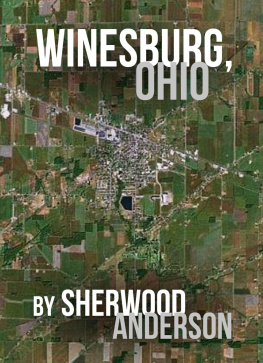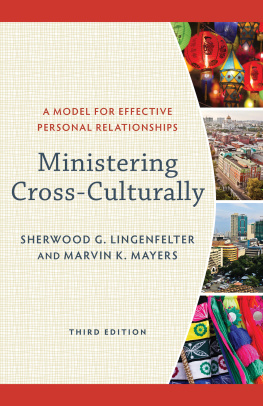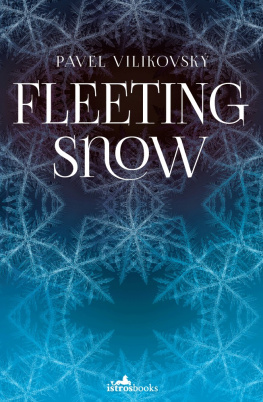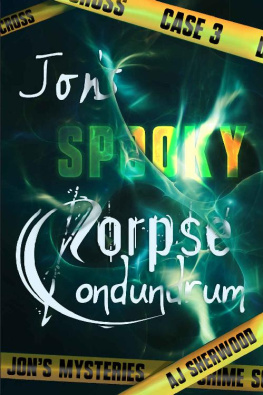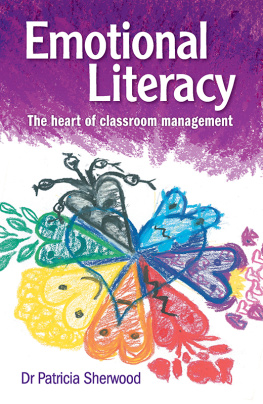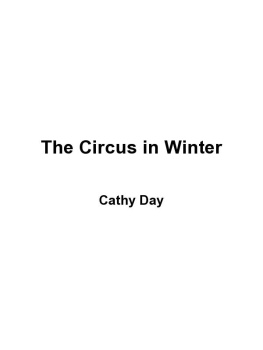Sherwood Anderson - Winesburg, Ohio
Here you can read online Sherwood Anderson - Winesburg, Ohio full text of the book (entire story) in english for free. Download pdf and epub, get meaning, cover and reviews about this ebook. City: New York, year: 1960, publisher: Viking Press, genre: Detective and thriller. Description of the work, (preface) as well as reviews are available. Best literature library LitArk.com created for fans of good reading and offers a wide selection of genres:
Romance novel
Science fiction
Adventure
Detective
Science
History
Home and family
Prose
Art
Politics
Computer
Non-fiction
Religion
Business
Children
Humor
Choose a favorite category and find really read worthwhile books. Enjoy immersion in the world of imagination, feel the emotions of the characters or learn something new for yourself, make an fascinating discovery.
- Book:Winesburg, Ohio
- Author:
- Publisher:Viking Press
- Genre:
- Year:1960
- City:New York
- Rating:3 / 5
- Favourites:Add to favourites
- Your mark:
- 60
- 1
- 2
- 3
- 4
- 5
Winesburg, Ohio: summary, description and annotation
We offer to read an annotation, description, summary or preface (depends on what the author of the book "Winesburg, Ohio" wrote himself). If you haven't found the necessary information about the book — write in the comments, we will try to find it.
Winesburg, Ohio — read online for free the complete book (whole text) full work
Below is the text of the book, divided by pages. System saving the place of the last page read, allows you to conveniently read the book "Winesburg, Ohio" online for free, without having to search again every time where you left off. Put a bookmark, and you can go to the page where you finished reading at any time.
Font size:
Interval:
Bookmark:
WINESBURG, OHIO
A GROUP OF TALES
OF OHIO SMALL-TOWNLIFE
INTRODUCTION BY ERNEST BOYD
to the memory of my mother
EMMA SMITHANDERSON
Whose keenobservations" on the life about her first awoke in me the hunger to seebeneath, the surface of lives, this bo ok is dedicated .
Winesburg, Ohio is a 1919 shortstory cycle by the American author Sherwood Anderson .The work is structured around the life of protagonist George Willard from thetime he was a child to his growing independence and ultimate abandonment of Winesburgas a young man. It is set in the fictional town of Winesburg, Ohio (not to beconfused with the actual Winesburg )which is based loosely on the author's childhood memories of Clyde, Ohio.
Mostly written from late 1915 to early 1916, with a fewstories completed closer to publication, the cycle was "conceived as acomplementary parts of a whole, centered in the background of a singlecommunity". The book is broken down into twenty-two stories, with thefirst story, "The Book of the Grotesque" serving as an introduction.Stylistically, because of its emphasis on the psychological insights ofcharacters over plot, and plain-spoken prose, Winesburg, Ohio is knownas one of the earliest Modern novels.
Winesburg, Ohio was received wellby critics despite some reservations about its moral tone and unconventionalstorytelling. Though its reputation waned in the 1930s, it has since reboundedand is now considered one of the most influential portraits of pre-industrialsmall-town life in the United States.
Winesburg, Ohio is a collection ofrelated short stories, which could be loosely defined as a novel. The storiesare centered on the protagonist George Willard and the inhabitants of the townof Winesburg, Ohio.
It is widely acknowledged that the fictional model of thebook's town, Winesburg, is based on Sherwood Anderson's boyhood memories ofClyde, Ohio, where Anderson lived between the ages of eight and nineteen(1884-1896) not the actual town of Winesburg, Ohio located in the same state.This view is supported by the similarities between the names and qualities ofseveral Winesburg characters and Clyde's townspeople, in addition to mentionsof specific geographic details of Clyde and its surrounding areas.
It is not known why Anderson chose the name Winesburg for thetown in the book. What is known is that the name was not necessarily inspiredby the stories themselves. In actuality, Anderson had been using Winesburg,Ohio as a base for Talbot Whittingham, the protagonist of an unfinished novelhe had been writing on-and-off for several years prior to the composition ofthe Winesburg stories.
A direct relationship between the real Clyde and the fictionalWinesburg, however, remains the supposition of scholars. Anderson wrote in, AWriter's Conception of Realism that he reacted with "shock" whenhe "...heard people say that one of my own books Winesburg, Ohio,was an exact picture of Ohio village life." The author went on to admitthat, "the hint for almost every character was taken from my fellowlodgers in a large rooming house..." These lodgers were the "...youngmusicians, young writers, painters, actors..." and others that lived inproximity to Anderson on the North Side of Chicago and whom he referred to as"The Little Children of the Arts". The truth likely lies somewhere inbetween with memories of Clyde "merging" with Anderson's interactionsat the boardinghouse.
Because Sherwood Anderson was so ambiguous about what directlyinfluenced him, it is difficult to say that any specific writer or workinspired him to write Winesburg, Ohio as a whole. Still, most scholarsaffirm the obvious connection between Anderson's cycle and the Spoon River Anthology of Edgar Lee Masters (published in April 1915), which Anderson reportedly stayed up all night toread. Though B.W.Huebsch , Anderson's publisher, sent out a statement, upon therelease of Winesburg, Ohio heading off comparisons between the two worksby stating (erroneously, as it turns out) that the Winesburg stories wereprinted in magazines before the Spoon River Anthology was published, thesimilarities in small-town setting, structure, and mood of the works have beennoted by several reviewers, with one going so far as to call Winesburg, Ohio,the Spoon River Anthology "...put into prose".
GertrudeStein , whose work Anderson was introduced to by his brotherKarl probably initially between 1912 and 1915, is also said to have played akey role in helping shape the unique style found in the stories. Through hisinteraction (at first satirizing it before ultimately accepting it as essentialto his development) with Stein's Three Lives (1909) and Tender Buttons (1914), Anderson found theplain, unambiguous voice that became a staple of his prose. As indicated by thecorrespondence the two writers developed after the publication of Winesburg,Ohio, variations on the repetition found in Stein's writing in addition totheir mutual appreciation for the sentence as a basic unit of prose were alsolikely features of her writing that Anderson noticed and drew upon in writinghis Winesburg, Ohio. Irving Howe summarized the pair's connection aptlywhen he wrote, "Stein was the best kind of influence: she did not bendAnderson to her style, she liberated him for his own".
Numerous other writers and works have been mentioned aspossible sources from which the elements of Winesburg, Ohio were drawn,most of them either denied or unacknowledged by Anderson himself. The influenceof TheodoreDreiser and the Russians ( Chekhov , Dostoevsky , and Tolstoy ) werediscounted by the author, the former for stylistic reasons, the latter becausehe had apparently not read them prior to writing his book. While Andersonexpressed an admiration for IvanTurgenev 's A Sportsman's Sketches , theaffinities between Turgenev's novel and Winesburg, Ohio ("...bothare episodic novels containing loosely bound but closely related sketches, bothdepend for impact less on dramatic action than on climactic lyrical insight,and in both the individual sketches frequently end with bland understatementsthat form an ironic coda to the body of the writing") may not be a sign ofinfluence since it is not known whether Anderson read the book before writing Winesburg,Ohio. Finally, the regional focus on the mid-west has been linked to thewriting of Mark Twain ,particularly The Adventures of Huckleberry Finn and while Anderson read and revered Twain, the connection between Twain and Winesburg,Ohio has largely been made by scholars seeking to place the book within thecanon of American literature, not necessarily by the author.
According to Anderson's account, the first of the stories thatbecame Winesburg, Ohio (probably "The Book of the Grotesque")was composed, on the spur of the moment, in the middle of the night, probablywhile he was staying on the third floor of a rooming house on 735 Cass Streetin Chicago: "...it was a late fall night and raining...I was there nakedin the bed and I sprang up. I went to my typewriter and began to write. It wasthere, under those circumstances, myself sitting near an open window, the rainoccasionally blowing in and wetting my bare back, that I did my firstwriting...I wrote it, as I wrote them all, complete in the one sitting...Therest of the stories in the book came out of me on succeeding evenings, andsometimes during the day while I worked in the advertising office..."Study of his manuscripts show that, though it is probably true that most of thestories were written within a relatively short span of time in late 1915, likea number of facts in Anderson's retelling of his writing process (for instance,his claim that he had written the
Next pageFont size:
Interval:
Bookmark:
Similar books «Winesburg, Ohio»
Look at similar books to Winesburg, Ohio. We have selected literature similar in name and meaning in the hope of providing readers with more options to find new, interesting, not yet read works.
Discussion, reviews of the book Winesburg, Ohio and just readers' own opinions. Leave your comments, write what you think about the work, its meaning or the main characters. Specify what exactly you liked and what you didn't like, and why you think so.

